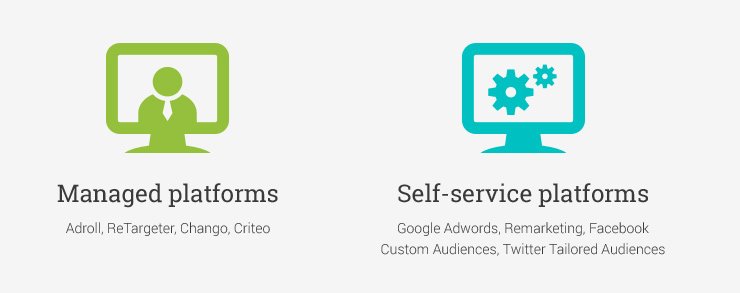Experts suggest that it takes about eight touches before a prospect is ready to engage with your brand. That means they need to see or hear about your product eight times before they are willing to seek more information. Did you get that? Eight times! This is why website remarketing, also known as retargeting, is such a hot topic right now among marketing strategists.
There is more.
It may only require eight impressions before they are ready to engage, but it takes even more before they feel comfortable taking action.
“On average, AdRoll customers earn $10 for every $1 they spend on retargeting.” – Adroll
Before we look at how to best leverage website remarketing and engagement, let’s take a look at what NOT to do.
The Basics of Remarketing
This is a true story. My son decided to use my Amazon Prime account to purchase a ‘joke’ gift for one of his friends. He logged in about 5 states away and made the purchase. Within the hour, smiling poop emoji mugs started appearing in ads on almost every site I visited. It has been weeks and they are still popping up.
Another of my sons visited the Farmersonly.com site so he could learn to play the jingle on the piano. Don’t bother asking why… I know that I don’t… The point is that he did it on my computer.
Guess who started getting emails from farmersonly.com and other dating sites?
This is the most basic kind of website remarketing. Every time you search for something on the internet, chances are that you are going to see those products over and over again. The companies pay for retargeting ads to remind you about the items you were interested in but did not purchase.
The problem with this type of basic remarketing program is that it can become irritating. The message is not right and it shows up way too often. In the end, this unsophisticated form of remarketing can hurt your brand rather than promote it.
The fact is that I am happily married and I live in the city. Plus, if I had already bought that mug why would I want to buy another? It would have made more sense for that company to show me ads for related items rather than the mug itself.
See what I mean?
How to Create a Website Remarketing Strategy
“The average click-through rate online for display ads is .07 percent and the average click-through for retargeted ads is about .7 percent. (That’s a 10X increase) …big brands like Zappos are spending more and more money on this. It’s the right ad at the right time to the right person.” – Greg Coleman, president of retargeter, Criteo
There are several steps involved in creating a good remarketing program. However, the starting point is your visitors.
Who are they and what did they look at?
For those with Google Ads Campaigns, the process is simple. All you need is for your website developer to add a piece of Google remarketing code to your website.
Yes, you could conceivably do it yourself, but this is where having a strategic marketing and development team can pay off. You can precisely target your most interested leads. Depending on the platform you are using, you can have different retargeting ads triggered for people who visited two different pages on your website. Imagine ads specific to one of your key services being shown to someone who looked at that specific service and even giving them a unique call to action in the ad because you know they’ve already seen your webpage.
For instance, let’s assume Customer A comes to the RC Toolbox website and looks at photos of underbody toolboxes. After looking through the product pages and also the contact page, they leave. A remarketing tag would then place ads for RC toolboxes on appropriate sites where that prospect might visit (truck sites, parts sites, etc.)
But, what if Customer B goes to the RC Toolbox site and looks at information on custom library bins? It wouldn’t make much sense to place toolbox ads in front of them, and you wouldn’t want to place your ads on truck sites.
Retargeting has become very sophisticated. Not only can you target different types of visitors but you can also eliminate those that immediately bounce off your site. This can save a lot of ad dollars by eliminating those that probably weren’t that interested in your products, to begin with.
The Added Benefits of Website Remarketing
So, let’s break down the benefits you get from remarketing to your website visitors with targeted ads.
1. Qualified Leads
First and foremost, you only market to qualified leads. This reduces time, effort, and advertising costs.
2. Raises Brand Awareness
These remarketing ads raise brand awareness in the consumer’s mind. They are reminded of you. Your product and brand are reinforced and given greater authority, even if they don’t click on your ad. This helps meet the need for multiple touches before conversion.
“Our Client” sells a high-tech niche product that retails for about $1000. Their product offers a strong value alternative to the established name brand. They wanted to increase sales by having more people buy their product. They were accustomed to offline forms of lead generation but had never tried online ads before. Solution? Turning on remarketing through AdRoll!
- Effect designed the ads
- Effect configured AdRoll to show these ads to people that had visited the client’s product pages (targeting people who were interested enough in the product to view the product details)
- Ads “rolled” for 3 months.
Result? Over three months “The Client” spent about $2.50 per person who went back to their site and actually added the high-tech $1000 product to their online shopping cart. Talk about effective!
3. More Cost-Effective
The cost of remarketing is lower because you are not paying to compete for the new people. You only engage people who you already visited your website.
4. Upsell Offers
Ironically, you can also use this method to reach your recent customer base with upsell offers.
“We’ve found click-through rates and conversion rates (conversions per impressions) to be anywhere from 3% to 5% higher than standard site-based retargeting.” – ReTargeter
Who are the major players?
The main two ways to access remarketing ads are through managed platforms (they do all the heavy lifting) or self-service platforms (if you have a smaller budget, or when you want to control more of the segmentation and track the results internally). Each of these has some differences, but they largely fall into these two categories.

Get Back Lost Customers
For sites with over 1000 visitors a month, remarketing ads should be a part of your marketing strategy. Lean on us for help with planning your remarketing strategy. Our Google Ads specialist can help design the ads and set up your accounts. Let us implement your campaign, track results, and evolve your website remarketing strategy.




